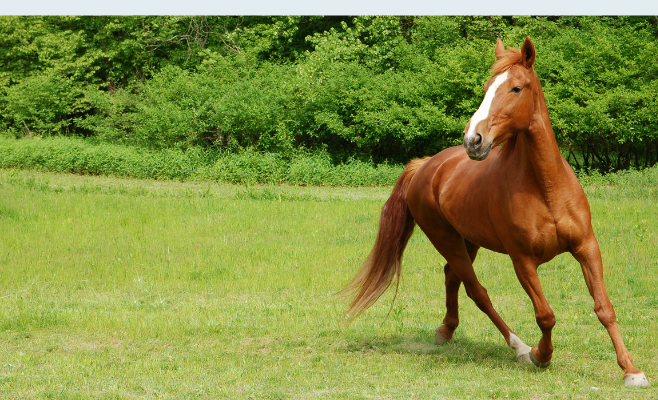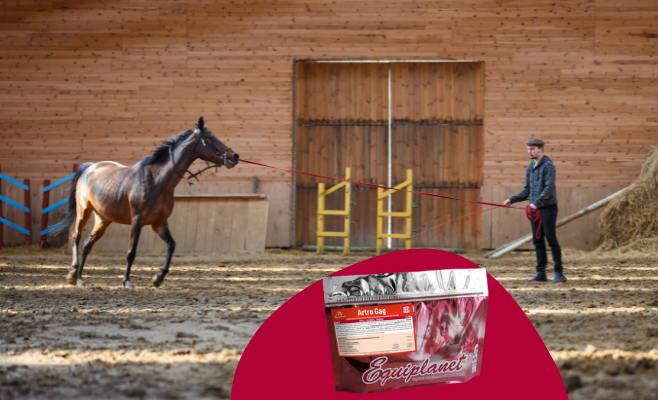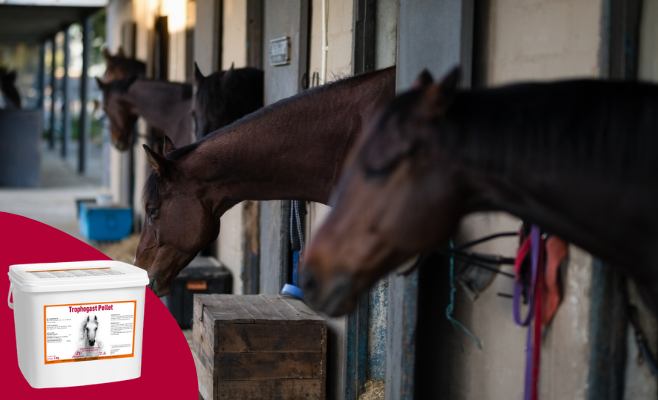
Yearling Period: Balanced diet for best development in the first year of horse life
26 April 2021
Biotin for horses: how and when to use it
26 July 2021Colts and Fillies taming and training: 7 nutritional tips


Young horses between 18 months and 2.5 years of age begin taming and training, depending on the breed, attitude and sporting discipline in which they will be used. Taming is a very delicate moment in the horse’s education, as is training. Despite the fact that the horse was domesticated by human 4,000 – 3,500 years ago, the atavistic perception of being his prey remains, resulting in a delicate approach, based mainly on touch. For taming, the horse is removed from the paddock and work begins in the stable.

This phase is particularly critical as the interspecific relationship between man and horse begins, so it is necessary to have great sensitivity and experience, following the ethology of this noble animal to obtain balanced, trusting and cooperative horses. At the same time, the horse’s diet must be modified according to its specific needs, for which it is best to consult technical personnel specialised in equine nutrition.
Taming and training: Let’s take a look at some nutritional advice for the horse starting work in the stable
1 – Increasing energy intake in colts and fillies
A horse that is starting to work will certainly have a greater expenditure of energy than a horse in the paddock or stabled. Besides, a colt or filly in taming and training is at an age when growth and work requirements overlap. It is therefore advisable to increase the caloric intake of the ration, but without overdoing it, to avoid overfeeding the horses with consequent growth disturbances. This is a mistake that is frequently made, especially in fast-growing breeds such as the Quarter Horse and the English Thoroughbred.

. The advice is to use a balancer that is well suited to the needs of young working horses such as Training, complementary feed in pellet form to be combined with good quality of grain and hay.
2 – Structuring young horses muscle
During the second and third years of a horse’s life, the formation of the musculoskeletal system is underway, which is why it must be supported by giving amino acids in optimal quantities and proportions. There are 20 amino acids that positively influence a horse’s diet, 10 of which are essential, so the horse cannot synthesise them but they must be taken in through the diet. The ratio of amino acids and their quantity determines the quality of the protein. To support the muscular system of a horse starting work, it is advisable to use Aminotop, a complementary feed based on amino acids in an optimal ratio.

3- Controlling lactic acid in colts and fillies
During exercise, the body requires more energy for muscle contraction. In particular, in colts and fillies starting to work, the activation of energy metabolism involves changes to which the musculoskeletal system is not yet acclimatised. In the early stages of training, the accumulation of lactic acid in the muscles may occur. Complementary feeds such as No Acid speed up the metabolisation of lactic acid thanks to the buffering substances it contains (e.g. citric acid, sodium diacetate and propionate).

4 – Controlling fluid and electrolyte loss in training horses
During the early stages of taming and training, energy production and heat dissipation can lead to a significant loss of fluids and electrolytes through sweating, thus triggering anaerobic metabolism in advance with an earlier perception of fatigue. As a result, the horse’s concentration and cooperation are impaired. To keep the horse hydrated and restore the salts lost through sweating, it is important to supplement the horse’s diet daily with complementary feed containing mineral salts and antioxidants such as Reidral + CY.

5 – Supporting the joints of colts and fillies
After the colt or filly leaves the stud farm, it begins to work harder than moving freely in the paddock and its joints are put under greater strain. If Training is used as part of the ration, it already contains 5000 mg/kg of MSM and Glucosamine.

If, however, the diet does not include any supplementation with these two substances, which are important for the synthesis of many components of joint cartilage, it is useful to give complementary feeds to support this. In growing horses, a complementary feed containing lysine, an essential amino acid for tissue development in colts and fillies, is suggested, such as Artro Gag.
6 – Reducing stress reactions in taming and training young horses
Taming and training sometimes take place in a different stable than the breeding one. Separation from the herd or mother, new housing and entry into work are stressful conditions in the growing foal. This can cause alterations in the gastro-intestinal system and change the normal integrity of the gastric mucosa. It is preferable, as in all stressful situations, to use a complementary feed such as Trophogast pellet to help the horse reduce stress reactions by supporting the normal physiology of the gastric mucosa.

7- Supporting the cardiovascular system in training horses The last step in starting training and work in young horses is to consider the haemodynamic consequences of the first athletic efforts. Several studies (Hodgson Rose, 1994 – Fazio, 2013) have observed that daily training in young horses induces a release of catecholamines that leads to an increase in red blood cells, haemoglobin and haematocrit. This occurs because there is a physiological squeezing of the spleen, a big reservoir of red blood cells.

Increases in these blood parameters are important factors to evaluate because they determine the horse’s best aerobic capacity. This is why complementary feeds to support the cardio-circulatory system such as Hemo Complex are useful during the first low intensity training sessions and should be included in the ration of colts and fillies
Are you a trainer and want some advice on nutrition? Contact us by email: info@equiplanet.it and our team of experts will provide you with all the useful needed answers.
Follow us on our social page of Instagram
Bibliography
- Adattamenti ematologici, ematochimici e funzionali nel cavallo in corso di addestramento. Fazio. Atti SIFIOVET 2013
- Effect of taming training on physical and hemato-biochemical parameters of horses before and after exercise. Costa, B. O. 2016
- Gestione alimentare in alcuni centri di allevamento e/o addestramento italiani di cavalli Quarter Horse. Gatta, 2002
- Nutrition of the excercising horse. M. Saastamoinen, 2008
- Nutrizione Equina, Z. Davies, 2009
- Effects of a new supplement and of the work in standardbreed trotters performing early training. Valle E, 2006

